
Competition is a driving force in the hearts of most athletes, but for some athletes, there is also something else pushing them ever to the edge: the thrill. These athletes are forever striving to go bigger, higher, farther and faster, and they are the engine behind the growth of two of action sports’ most popular disciplines: skateboarding and BMX.
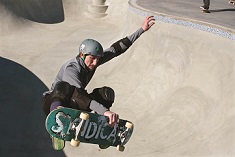
In 2014, the International Olympic Committee announced the Olympic Agenda 2020, a strategic plan that, in part, gave Tokyo, host of the 2020 Summer Olympics, the opportunity to be the first-ever host city to make recommendations for the Olympic Programme.
In September, Tokyo’s Olympic committee proposed 18 additional events from five sports: baseball/softball, karate, sports climbing, surfing and skateboarding. In an official statement, the Tokyo committee explained, “This package of events represents both traditional and emerging, youth-focused events, all of which are popular both in Japan and internationally.”
But what do the youth think about all this? Skateboarding has long had an anti-establishment streak, even as organized competitions, such as the Dew Tour and X Games flourished.
“It just so happens that skateboarding is a huge lifestyle sport,” says Gary Ream, president of the International Skateboarding Federation (ISF), which aims to become the sport’s international governing body. “The kids live it, and it’s not necessarily related to competition. They have raised their sport to an art form, but that’s also what has caught the attention of world-class athletics.”
The ISF is one of a number of organizations that sanction skateboarding events worldwide, including FIRS, the international roller sports federation and the World Skateboarding Federation (WSF). These organizations, along with a number of the sport’s influencers, met at the first World Skateboarding Summit in Istanbul in June 2015 to begin establishing international standards for the sport.
In August 2016, the IOC will make its final selection of new 2020 sports, and in the meantime, event owners and athletes speculate about what an Olympic bid would mean for skateboarding.
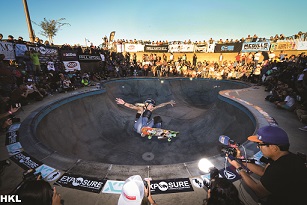
Currently, a few international and national competitions provide a goal for skateboarding’s young athletes. The Dew Tour, that televised action sports tour, has demonstrated the demand for more action sports, drawing over 2.5 million spectators in its 11-year history and reaching more than 215 million households via televised competitions.
Ocean City, Maryland, knows what it takes to host one of the Dew Tour’s mega competitions, having not only hosted the event for four years but also been host to the Tour’s highest-attended events during those four years. Like many sports, skateboarding events are most successful when they are held in areas rich with that sport’s athletes and fans, and that’s exactly where Ocean City could really shine.
“Ocean City has the oldest skate park in the country still in operation, Ocean Bowl Skate Park,” says Donna Abbott, director of tourism and marketing for the Town of Ocean City. The 17,000-square-foot park has a pool-style concrete bowl, a large vert ramp and mini-ramp, and a 13,000-square-foot open concrete street course with hit walls, hips and a small bowl.
While the Dew Tour constructed a purpose-built beachfront skate park for the event in Ocean City, it also took advantage of the local skateboarding facilities and culture, hosting a small event at Ocean Bowl Skate Park during the Tour.
Skateboarding Like a Girl
One of the requirements of Olympic sports is that they offer opportunities for both men and women, but opportunities for female skateboarders have traditionally been on the scarce side. Pro skateboarder Amelia Brodka decided to change all that.
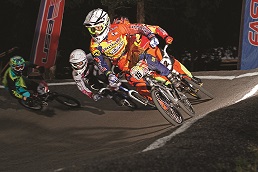
“Underexposed: A Women's Skateboarding Documentary” followed, revealing the lack of girls’ competitive skateboarding opportunities.
“'The attention from the documentary helped bring together a team of volunteers and supporters who made our first event possible,” she says. The documentary inspired Lesli Cohen to join Brodka in co-founding EXPOSURE, a nonprofit dedicated to empowering women through skateboarding.
The event, also called Exposure, has grown from 20 pro/am competitors to more than 100 in just four years, raising money each year to combat domestic violence. In 2015, a street competition was added to the program, which already included vert and bowl, all taking place at California’s Encinitas Community Skate Park, which opened in the summer of 2015.
Built in part thanks to an organized and vocal push from local skateboarders, the 44-acre, $19.8 million Encinitas Community Park, located in San Diego County, now welcomes an enthusiastic skateboarding community at its 13,000-square-foot skate park with a bowl and street skating plaza.
That same community welcomed Exposure 2015 and helped make the event an even greater success. “Encinitas Skate Park is amazing,” says Brodka. “A state-of-the-art street plaza that’s great for all levels, and an incredible bowl. And they graciously let us put a vert ramp up in the grass.”
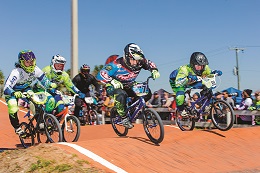
Action Sports Capitals
Eugene, Oregon, is a destination known for action and outdoor sports in general, and has been growing in reputation its name for hosting the skateboarding community.
“We have an amazing facility called the WJ Skatepark and Urban Plaza, which is part of Washington Jefferson Park and is the country’ largest lit and covered skate park,” says Angie Riley, digital marketing manager, Travel Lane County. The 23,000-sq.-ft. skate park features elements to challenge experts but also welcome beginners, including an iconic ribbon, mini-snake run, and a blend of varied skate terrains.
One of the facility’s most recently added events is the Northwest Jam, which celebrated its second year in 2015. In just two years, the event has grown to 500 participants and delivers an estimated economic impact of $56,916.
Within greater Eugene, though, a lot of action sports enthusiasts find their ideal space to play, including BMX riders.
BMX can be divided roughly into two categories: freestyle or “trick” BMX riding and BMX racing. Freestyle BMX is often done in the same facilities as skateboarding, while BMX racing requires a BMX course, and Lane County has two of those as well: Emerald Valley and Cottage Grove BMX. The area has another BMX claim to fame: Lane County is home to Lance McGuire, a nationally recognized BMX racing course designer and athlete.
BMX racing made its Olympic debut in 2008, but freestyle BMX, like skateboarding, has followed its own independent course. Recently, though, freestyle BMX also stepped into the international spotlight as UCI (Union Cycliste Internationale), the international cycling governing body, announced its decision to add freestyle as one of its disciplines and launch the UCI BMX Freestyle Park World Cup, which will be part of the FISE World Series, the International Festival of Extreme Sports.
Taking the Race Off Road
BMX racing began in the late ‘60s/early 70s with a few Southern California kids who really wanted to race motocross—an off-road motorcycle sport—but weren’t big enough for motorcycles, or at least didn’t have access to them. Instead they modified their bikes and raced around a vacant dirt lot; in the process, they invented a new sport, one that now has a huge following.
With more than 380 BMX racing courses across America, access to this sport is easy and growing.
“I think the biggest contributor to our success is our model,” says John David, chief operating officer, American Bicycle Association, parent organization of USA BMX and BMX Canada, as well as the sport’s NGB. “Our model wasn’t Olympic because we started in 1977, and we weren’t an Olympic sport. Our model is grassroots. How big can our base be? How many successful BMX programs can we have that give kids the opportunity to ride? Despite the fact that we’re an Olympic sport now, we never lost that.”
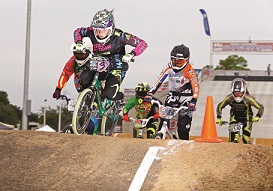
With five to 10 new local tracks being added each year, a process that is supported by USA BMX, access and participation are steadily climbing nationwide. The ABA sanctions more than 11,000 events each year, as well as state and regional championships and 30 national events. What’s even more impressive than the number of events is the number of spectators they deliver: 3.4 spectators per athlete.
Redmond, Oregon, for example, is host to thousands each year at the American Bicycle Association (ABA)/USA BMX Great Northwest Nationals held in the Bank of the Cascades Center, a multi-purpose, 279,000-square-foot indoor arena.
“It’s a beautiful location, nestled against the mountains and high desert, and there are so many things to do here,” says Dan Despopoulos, facility director. “Lots of kids participate, so there are siblings who need to be entertained.”
Conservative estimates indicate that the event, which attracts participants from 19 states, Canada and Mexico as well as more than 4,000 spectators, brings in just over $2.2 million during the three-day competition.
Other BMX races exhibit similar success. Columbia County, Georgia, just opened its first BMX race course, as well as skate park, in Blanchard Woods Park. Built with a variety of dirt obstacles, along with steeply banked, paved asphalt turns, Blanchard Woods BMX is one of the country’s newest USA BMX courses and hosted in November the USA BMX Gold Cup Regional Championships.
The Championships were scheduled for October, but nature had other plans. The leftovers of Hurricane Joaquin brought predictions of 10-inch rainfall, leading race organizers to postpone the event. As it turned out, however, BMX athletes can’t be held back by a slight delay.
“They had 636 unique racers, which is really good for an event period, but considering they had to postpone, it was great that they got the turnout they did,” says Randy DuTeau, executive director, Columbia County Convention and Visitors Bureau.
In Wichita, Kansas, USA BMX dreams are in the air, literally. Home to mostly state and regional BMX racing events currently, the city is eager to bring a national event to its Park City BMX course, so eager in fact that they flew a USA BMX national coordinator over the site in a 1942 Stearman bi-plane, an opportunity any visitor can take advantage of at Vintage Flyers, a vintage bi-plane tour company in Wichita.
“We’re the Air Capital of the World,” says Drew Hays, destination sales manager, sports, “and we’re really excited about the possibility of hosting USA BMX in the future, so it just made sense to give him an aerial view of the track.”
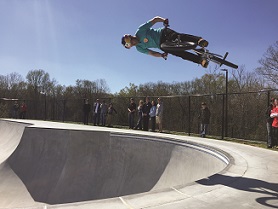
A New Way to Ride
In Santa Rosa, California, the community is embracing a new way to use their BMX bikes: Pump Trax. On these progressive bike courses, cyclists on anything from kids’ bikes to BMX or mountain bikes “pump” through varying sizes of rolling hills. With more variety than a standard bike path, Pump Trax also offers a way to use a piece of land with a smaller footprint.
“A local organizer is working with Pump Trax USA to add one of these facilities to Northwest Community Park, and we’re exited to become part of this movement that’s sweeping the country,” says Charlene Lennon, director of sports development, Visit Santa Rosa.
These new facilities are recreational for now but could represent a whole new kind of competition in the near future. It just goes to show, the need for speed is universal. Whether on skateboards or BMX, with concrete or dirt, with a huge tract of land or a small corner of a park, communities nationwide are finding ways to get in on the action.

